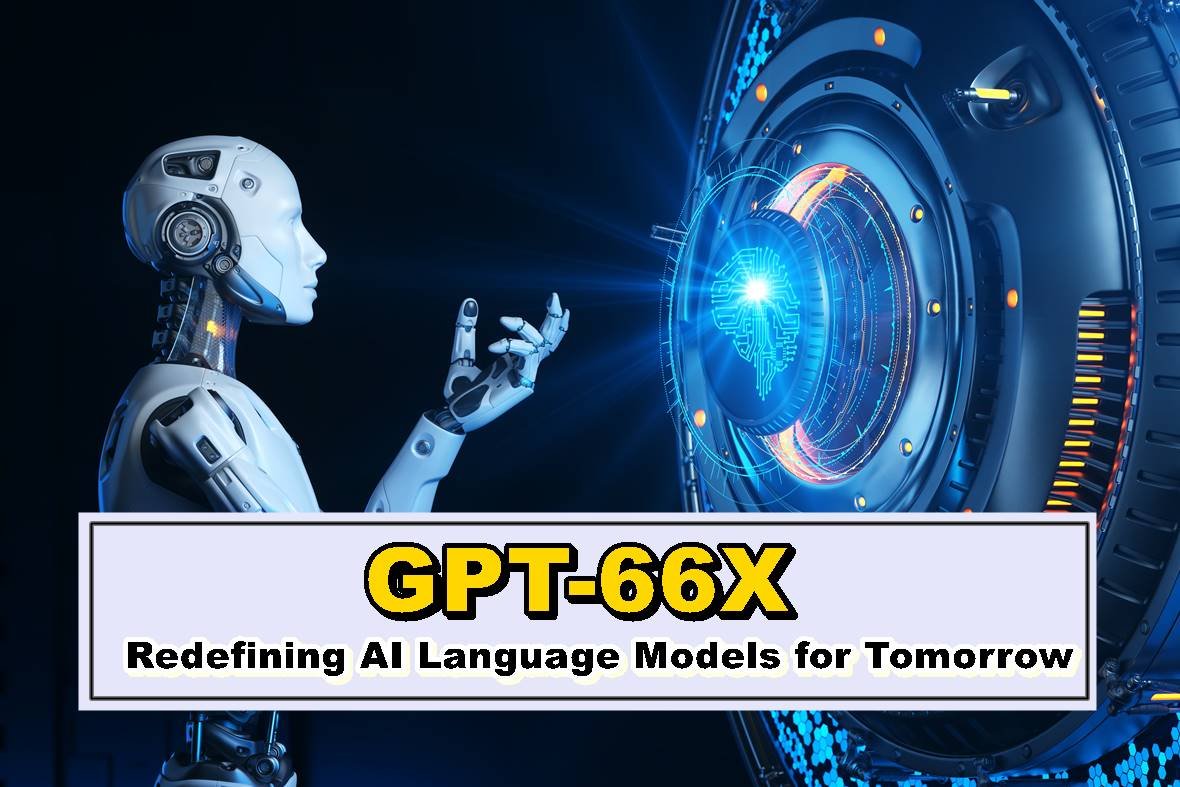In the ever-evolving world of artificial intelligence, GPT-66X stands out as a game changer. This groundbreaking technology, the “Genius Prodigy Transformer,” is revolutionizing our interactions with AI and opening doors to countless possibilities and opportunities. In this article, we will delve into the intricacies of GPT-66X, exploring its capabilities, applications, and the potential impact it could have on various industries.
What is GPT-66X?
GPT-66X represents a remarkable breakthrough in artificial intelligence, particularly in natural language processing. OpenAI developed GPT-66X, building upon the successes of its predecessor, GPT-3, to elevate our understanding of language and generation to unprecedented levels.
The Power of “Generative Pre-trained Transformer”
The “GPT” in GPT-66X stands for “Generative Pre-trained Transformer,” signifying the model’s ability to generate text outputs from input signals after extensive training on vast text data. It sets it apart from conventional AI models that rely on massive amounts of human-labeled data for training.
Unveiling GPT-66X: Size and Adaptability
What distinguishes GPT-66X from previous versions is its sheer size and capabilities. With an astonishing six trillion parameters (hence the “66” in its name), GPT-66X ranks among the most significant AI language models available. This size enables GPT-66X to excel in various tasks with remarkable speed and precision.
The Power of Adaptability
The key feature that sets GPT-66X apart is its adaptability to different scenarios and tasks without requiring control or tuning. It can perform various functions, including summarization, translation, question answering, sentiment analysis, and more, without specific requirements or modifications.
The Art of Human-Like Text Generation
One of the most remarkable aspects of this system is its ability to generate human-like language. Through continuous learning from an extensive dataset encompassing articles, books, websites, and other sources, GPT-66X produces relevant and coherent text.
The History and Development of GPT-66X


GPT-66X is one of the most advanced and up-to-date AI language models. Before delving into its capabilities and prospects, it’s essential to understand how this revolutionary model came to be.
Origins: OpenAI’s Vision
GPT-66X was first proposed in 2019 to create a language AI system that not only comprehends and generates human-like language but also demonstrates the ability to think critically and solve problems.
Data-Driven Development
OpenAI leveraged data from diverse sources, including books, articles, websites, and social media tweets, to accomplish this formidable mission. Deep learning algorithms were employed to analyze patterns and relationships in the text, facilitating model development.
Evolution from GPT-3
Initially named “GPT-3” (Generative Training Transformer 3), the prototype of GPT-66X was introduced in June 2020, boasting over 175 billion parameters, making it the most prominent language model at the time. Subsequent updates have only enhanced GPT-66X’s capabilities and power.
The Role of Transformers
The choice to name it “GPT-66X” is rooted in the underlying science—specifically, the use of transformers. While traditional language models rely on Recurrent Neural Networks (RNNs) or Convolutional Neural Networks (CNNs), GPT-66X harnesses transformers—a cutting-edge technology that enables parallel processing of vast data quantities, resulting in faster and more efficient training.
READ MORE: 92Career Exploring: Job Seeker’s Guide to a Dynamic Platform
How GPT-66X Works
Unraveling GPT-66X’s Inner Workings
GPT-66X, short for “Generative Pre-trained Transformer,” is a compelling AI-powered language model that has transformed how machines process and generate human language. This EASSY aims to provide an in-depth understanding of GPT-66X, including its operation and capabilities.
The Transformer Model
To begin, GPT-66X is built upon the deep neural network model known as the Transformer, first introduced by Google in late 2017. This model utilizes an auto-attention mechanism to establish word relationships within sentences and predict subsequent words or phrases based on contextual cues. This self-attention feature allows the model to recognize long-range dependencies in text sequences, enhancing its understanding of word relationships compared to other architectures.
Pre-training and Fine-tuning
One of the primary features of GPT-66X is its pre-training phase. Before fine-tuning for specific Natural Language Processing (NLP) tasks like text classification, question answering, or language translation, GPT-66X undergoes extensive unsupervised training on vast textual data, including books, articles, and websites. During this phase, the model acquires general linguistic knowledge across various languages, encompassing grammar rules, vocabulary usage patterns, syntactic structures, and cultural nuances.
Following pre-training, GPT-66X can be fine-tuned for specific tasks by adjusting a few model parameters using task-specific labeled data.
Applications of GPT-66X
GPT-66X boasts a wide range of applications, showcasing its versatility and effectiveness in various domains:
Human-Like Text Generation
GPT-66X is renowned for its ability to generate human-like text. This language model can use advanced AI capabilities to analyze vast datasets to produce coherent and relevant text. It is invaluable for content creation, including product descriptions, news articles, and creative writing.
Enhanced Chatbots
With the proliferation of chatbots in customer service and lead generation, GPT has emerged as a vital tool. Chatbots trained using GPT on extensive conversational data can deliver more natural-sounding responses, improving user interactions.
Language Translation
GPT excels in language translation. Compared to traditional machine translation models, GPT-66X produces more fluent and contextually sensitive translations, resulting in more natural-sounding translated text.
Text Summarization
GPT-66X offers robust text summarization capabilities, swiftly and accurately condensing lengthy documents or articles. This feature helps summarize research papers and news articles, saving time while retaining critical information.
Custom Content Generation
Personalized content significantly enhances user engagement, and GPT-66X can facilitate large-scale customized content creation, benefiting marketing campaigns and other creative endeavors.
Pros and Cons of GPT-66X
Pros:
- High Accuracy: GPT-66X excels in accuracy thanks to its extensive training on vast datasets, enabling it to generate precise and consistent text.
- Versatility: GPT-66X finds applications in various domains, including text completion, question-answering systems, chatbots, and more, making it suitable for commercial and academic projects.
- Natural Language Generation: With state-of-the-art AI algorithms, GPT-66X can produce text that rivals human composition, making it an invaluable tool for marketing campaigns and creative endeavors.
- Improved Contextual Understanding: Unlike previous models focusing on nearby words, GPT-66X considers the entire sentence context, resulting in more relevant and coherent responses.
- User-Friendly Interface: GPT-66X features an intuitive interface, making it accessible without technical knowledge in AI or Natural Language Processing (NLP). Users can easily customize outputs to meet their specific needs.
Cons:
- Possibility of Biased Outputs: Despite efforts to reduce the likelihood of bias, AI methods like those used by GPT-66X could still create biased or biased content because they draw their information from massive data sets that may have biases inherent to society.
- Unreal Understanding: GPT-66X generates text using patterns found in data but needs a complete understanding. It is unable to “understand” concepts that can result in incorrect information or responses that are not logical.
- Limitations in Context: While GPT-66X has helped improve understanding of context, it can need help comprehending the context of more extended or more complex conversations, resulting in some responses that aren’t in line with the topic.
- Inappropriate content generation: There’s a risk of GPT-66X producing inappropriate offensive, harmful, or dangerous content, mainly when it is not adequately monitored or moderated.
- Resource-intensive: Implementing and fine-tuning GPT-66X can be a significant resource and require a lot of computation power and information, which could limit access to smaller businesses or developers.
- Security Concerns for Data GPT-66X could require processing sensitive user information and raise concerns over data security and privacy if taken responsibly.
Case Studies and Success Stories
GPT-6X (Generative Pre-trained Transformer) has significantly impacted various sectors, demonstrating its effectiveness in natural language processing. Let’s explore some case studies and success stories where this powerful AI language model has been successfully employed.
Healthcare Industry
In the healthcare sector, a significant health tech company harnessed GPT-6X to create an artificial assistant capable of conversing with patients in natural language. This AI assistant schedules appointments, answers medication-related queries and provides essential medical guidance. It enhances the patient experience and improves healthcare professionals’ efficiency by reducing their workload.
E-commerce Sector
Online retailers have embraced GPT-6X to enhance the shopping experience for customers. A prominent online retailer utilized GPT-6X to analyze customer reviews and offer tailored product recommendations. This approach increased customer satisfaction, higher sales, and improved customer loyalty.
The Education Industry
GPT-6X has found its place in education by providing teachers with virtual assistants capable of grading assignments and providing feedback. Additionally, it can generate customized lesson plans based on student performance data, saving educators time and enabling personalized learning experiences.
The Future of AI-Language Models with GPT-6X
GPT-6X is poised to be the next iteration of OpenAI’s powerful language model, following in the footsteps of its predecessor, GPT-3. While GPT-3 has already demonstrated remarkable capabilities in natural language processing tasks, such as text completion and translation, anticipation is building for the advancements GPT-6X will bring.
Scaling Up
GPT-6X sets itself apart with its unprecedented scale and complexity. With a staggering 660 trillion variables (hence the “66X” in its name), it is 20 times larger than its predecessor, making it one of the most substantial language models ever created. This increased size will empower GPT-6X to comprehend and process language complexities more akin to human understanding.
Enhanced Performance
GPT-6X promises improvements in memory capacity, efficiency, and precision. As developers continue to refine this AI language model through machine learning, it is expected to outperform its predecessor significantly. It means that tasks involving text completion will become faster and more accurate. Additionally, developers may discover new applications beyond text-based lessons.
OpenAI’s Open-Source Approach
One compelling aspect of GPT-6X is OpenAI’s commitment to openness. The organization plans to make the entire source code available before the model’s release. This open-source approach invites developers and researchers worldwide to experiment with different model architectures and contribute to their development and training.
Conclusion
GPT-66X, with its unmatched scale, adaptability, and human-like text generation abilities, is transforming the landscape of AI and natural language processing. Its applications span diverse industries, from healthcare to e-commerce and education. As we eagerly await GPT-6X, the future of AI-language models holds immense promise, with potential advancements that could revolutionize how we interact with technology and the world around us.
FAQS
Q1. What is GPT-66X, and how is it different from other AI versions?
GPT-66X is referred to as an innovation in the field of artificial intelligence. Knowing the factors that make it different and how it improves on its predecessors is crucial.
Q2. What are the most important GPT-66X applications in various sectors?
Examine the real-world applications of GPT-66X in different sectors like healthcare, e-commerce, and education to better understand its impact.
Q3. What are the benefits and drawbacks of GPT-66X for developers and businesses?
Explore the advantages and disadvantages of implementing GPT-66X. It includes its accuracy, precision, and potential biases or limitations.
Q4. How does GPT-66X create human-like text? What do they mean for the creation of content?
Learn the workings of GPT-66X to generate human-like language and its importance for creating content marketing and creative writing.
Q5. What does the future bring for AI-language models such as GPT-66X? And how do developers become involved?
Discover the latest developments in AI-language models and OpenAI’s open-source model, encouraging researchers and developers to participate in their development.
